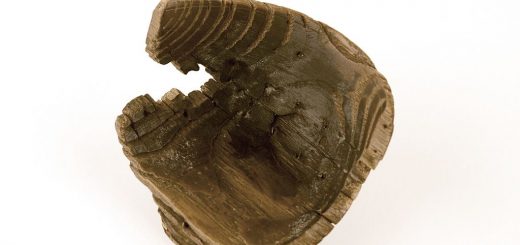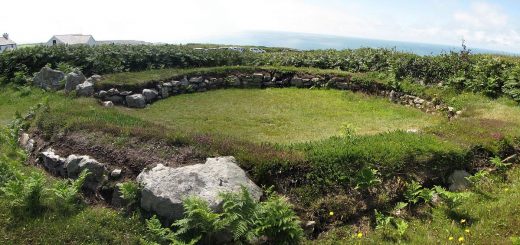St Tudno and St Tudno’s Church
Saint Tudno (pronounced Tidno) was allegedly one of the seven sons of King Seithenyn, whose legendary kingdom Cantref y Gwaelod (see The Lost Land of Wales) in Cardigan Bay was submerged by tidal activity. In reparation of his father’s neglect, he studied at St. Dunawd’s college in the monastery of Bangor Iscoed, Bangor on Dee, near Chester in the 6th Century. From there he went to the great ancient limestone outcrop of the Great Orme (Cyngreawdr), jutting from the Creuddyn Peninsula, to bring the message of Christianity to its people. His first home and (hermitage) on the Great Orme was a small coastal cave with difficult access known as Ogof Llech, which provided protection from the elements and a source of fresh water from a spring well Fynnon Llech. It is also said that Saint Tudno had in his possession one of the thirteen treasures of Britain, ‘The Whetstone of Tudwal Tudglyd’ when he built his cell here.
The present day church of Saint Tudno is a 12th Century structure built upon a 6th Century Christian site, and it is dedicated to its founder. It was extended in the 15th Century, and succumbed to the violent storms of the Great Orme in 1839 when its roof was blown away and the church was abandoned at this point. A local benefactor funded the repair of the roof and the restoration of the church in 1855. There were also subsequent restorations in 1888 and 1906. The church has some interesting features, the font probably dates from the 12th Century, and there are some early sepulchral stones and two 13th Century coffin lids. There is also a carved representation of the ‘Stigmata of Christ’ in the roof timbers above the Chancel step. Otherwise most of the furnishings now date from the time of the restorations.
Saint Tudno is the patron saint of Llandudno and his feast day is celebrated on 5th of June. Saint Tudno’s church is open daily, and everybody is welcome.





Recent Comments